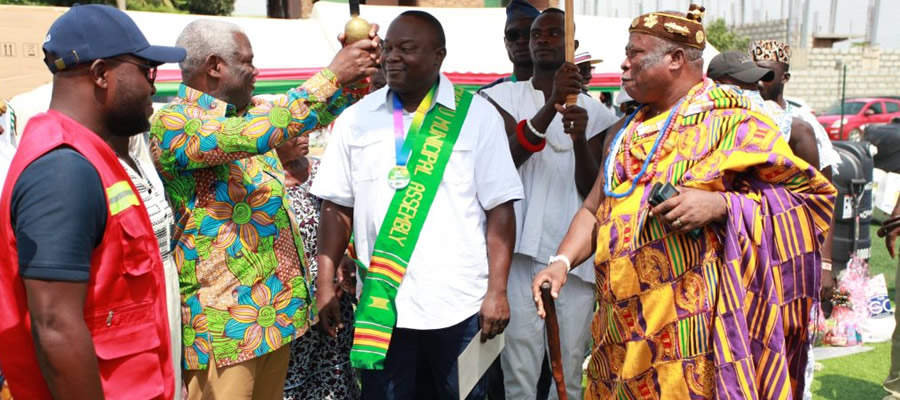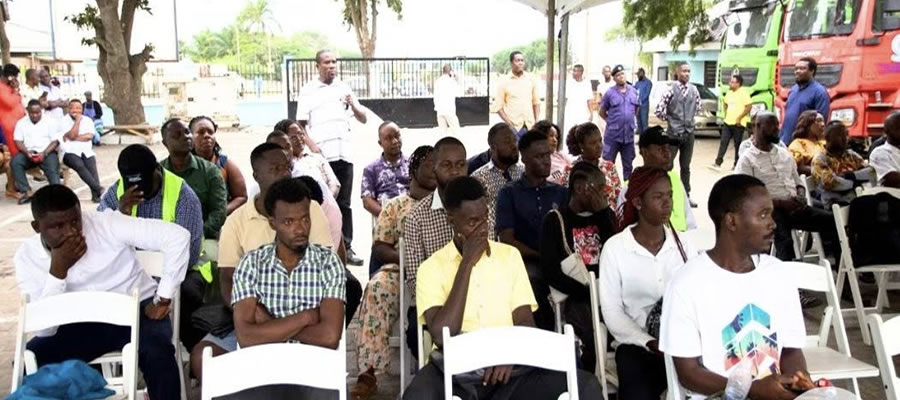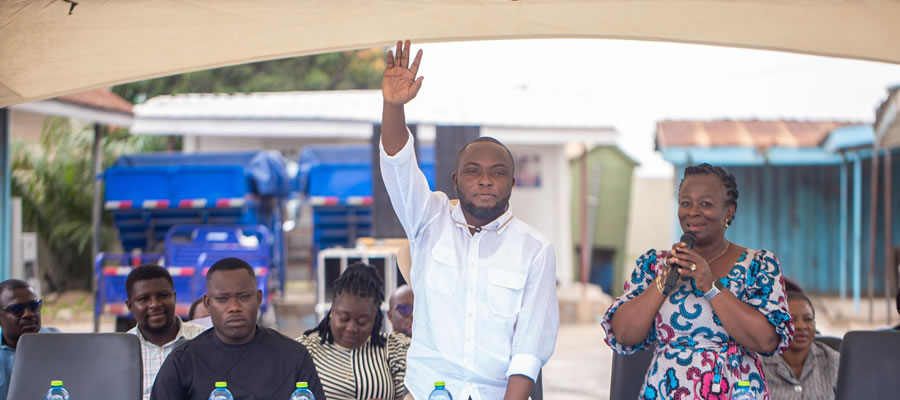

HOUSING CHARACTERISTICS
The housing character of the Municipality is varied depending on the various areas. It entails a predominantly densely populated, low income and indigenous zone along the southern or coastal portions such as Old Nungua and Old Teshie. Buildings in such areas are depressed and have poor quality material such as mud, untreated timber and zinc roofing sheets for walling. The housing environment is characterised by haphazard development, inadequate housing infrastructure, poor drainage, poor state of alleys, erosion and high population concentrations. An important housing intervention measure that can be initiated in the short term is the provision of alley pavements to facilitate movements in these low income settlements.
Towards the central and southern portions, one would observe relatively lower density middle income buildings with high level of encroachment on roads in a few areas. These middle income areas also have barely sufficient infrastructure to service them just like their low income counterparts. Another common feature of these areas, especially at the northern sections or periphery of the Municipality, are the large numbers of uncompleted houses inter-dispersed with pockets of undeveloped land which are often subject to litigation or the inability of organisations and individuals who own it to develop due to lack of funds. Nevertheless the municipality can boast of well-planned affluent neighbourhoods developed by estate developers such as Airport Hills, Manet Estates, Greda Estates which have very high level of infrastructure provision.
Land Ownership
More than 70% of the land in the Municipality is customarily owned (family and stool). However the Assembly through planning regulations is expected to manage development of infrastructure and other land uses but weak institutions over the years has posed a major challenge in the execution of this function.
Development Control
Development Control in the Municipality is handled by the Works Department which has responsibility for ensuring that approved developments are constructed according to the permit granted by the Municipal Planning Committee which is a multi-disciplinary committee chaired by the Chief Executive. The committee has overall responsibility for the management of the land-use plans and physical development activities in the Municipality and all other development agencies in the Assembly are expected to base their service delivery on these plans.
It is also appreciated under the development control functions of the Assembly that the proximity of the Municipality to the capital city and Tema, the second largest city in the Greater Accra Region as well as economic opportunities that the Municipality provides has led to increasing commercialisation of land which has put substantial economic pressure on customary lands. In this regard access to land is usually beyond the means of the poor who are forced to settle or squat on illegal lands.
A major challenge facing the Municipal Planning Committee is to draw a synergy between poverty reduction programmes for such poor areas on one hand and the need to enforce planning regulations on the other. There is also the added challenge of the constant demands of clients or developers for use conversion of the various land uses due to the dynamic nature of an urbanised municipality such as the Ledzokuku Municipality. The need for the planning committee to be very professional in maintaining the balance between original land use plans and the request or applications for changes to these plans is key if Ledzokuku Municipality is to manage her urban space effectively.
Population Distribution by Age and Gender
The estimated population of the Municipality is 261,571. The table below shows the population distribution of major settlements in the Municipality for 2008. It will be realised from the above table that approximately 51% of the population are females and the rest 49% males. This gives a sex ratio of 1:1.04 males to females. The dominance of females over males is a reflection of the nationwide trend where the estimated ratio is 1:1.03. The need to target women in any development programme in the Municipality can therefore not be overemphasised.
The graphical presentation of the age sex structure shown below clearly reveals the pattern for developing countries where the age cohorts in the lower age cohorts have a wide base indicating the youthful nature of the population with 50.7% the population under the age of 24years. It is also realised that approximately 43% of the population between 16 and 45 years constitute the active labour force.
Population Density
With a total land area estimated at 50 square kilometres and an estimated population of 261,571 in 2008, the general population density is calculated as 5,231 persons per square kilometre.
Ethnicity
The census figures for the 2000 population and housing census revealed that the Municipality is populated by people from various ethnic backgrounds with the Ga Adangbe Group (of which the indegenous Gas belong) making up a majority 44.3% followed by the Akans 34.8% and Ewes 12.4%
The analysis also showed that the predominance of a particular group vary based on the locality in question. Ga adangbes who constitute the main ethnic group appaear to be dorminat in areas like Nungua, South Teshie, Teshie and Maatetsuru while strong Akan domination was observed in migrant communities such as Teshie Nungua Estates. The military areas also revealed marked variety in ethnicity due to the varied ethnic backgrounds of personnel from across the country in such areas. Other minority groups found in the Municipality include Guans, Gurma, Mole Dagbanis, Grusis and Mandes.
The varied ethnic composition found in the different communities underscores the need for city managers to appreciate the unique cultural differences that may emanate in the localities to inform pragmatic interventions for effective governance of these communities.
Religious Characteristics
The 2000 Population and Housing Census Reveals that an overwhelming majority of 89.89% of the people in the Municipality are Christians while only 4.4% and 1.1% are Moslems and traditionalists respectively. The predominance of Christianity in the area is due to the strong presence of orthodox denominations such as the Catholics, Presbyterians, Methodists and Anglicans as well as Pentecostal Churches. These religious institutions therefore cannot be left out in resource and community mobilisation for development.
Migration
The analysis from the 2000 Population and Housing Census also shows that 41% of the inhabitants of the Municipality were migrants. In other words they were born outside the Municipality but have now settled there for various reasons while the remaining 59% responded that they were born in the Municipality.
The large numbers of migrants in the area as well as the heterogeneous character exhibited by the Municipality should inform pragmatic approaches for development.
Key issues relating to demographic characteristics
- 51% of the population are females and the rest 49% males giving a sex ratio of 1:1.04 males to females. The need to target women in any development programme in the Municipality can therefore not be overemphasised.
- The general population density is calculated as 5,231 persons per square kilometre.
- The population of the Municipality has a youthful nature with 50.7% the population under the age of 24years.
- 89.89% of the people in the Municipality are Christians while only 4.4% and 1.1% are Moslems and traditionalists respectively.
- 41% of the inhabitants of the Municipality were born outside the Municipality but have now settled there for various reasons while the remaining 59% were born in the Municipality.
Date Created : 11/20/2017 8:06:29 AM












 facebook
facebook
 twitter
twitter
 Youtube
Youtube
 +233 593 831 280
+233 593 831 280 0800 430 430
0800 430 430 GPS: GE-231-4383
GPS: GE-231-4383 info@ghanadistricts.com
info@ghanadistricts.com Box GP1044, Accra, Ghana
Box GP1044, Accra, Ghana